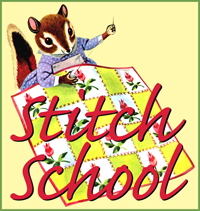Q: I've heard some people believe that clothing (and linens, perhaps) carry with them a bit of all the hands they've passed through. What are your feelings on this? ~Jennifer
I hadn’t really thought about this before, at least consciously, but I suppose it’s true. I wrote down this quote from one of Rachel Ashwell’s books years ago and I think she captured beautifully the path that vintage linens travel.
"...Unlike some flea market goods that seem a little surprised to find themselves down on their luck, secondhand fine old linen remains serene. It was made to last forever; rather than being thrown away, its function changed. A heavy old linen sheet, with its handstitching and patiently-produced embroidery, might have rested for the first few years of its life in a hope chest or bottom drawer, waiting for the girl who made it to marry and have a home of her own. When the sheet became worn it would have been carefully mended and, later still, when too threadbare to be repaired, it might be cut down for another use—perhaps a sheet for a child's bed—and eventually would end its days as cleaning rags with years of history. Fine linen evokes elegence, luxury, civility, quality, durability, economy—it is the antithesis of everything we abhor about our disposable, use-it-once-and-throw-it-away society."
And I think this passing-down holds true for clothing as well. Before ready-made clothing was available women sewed all of the garments for their families. Adult clothing was cut down to fit the children and handed down from older to younger child as they were outgrown. And I wore plenty of hand-me-down dresses from my older cousin when I was a kid so I know this was true long after clothing could be purchased. Then, when things were too worn to be recycled yet again, they were cut up into patches to use in quilting.
The fact that vintage clothing has been hot on and off for years attests to this love of history, too. Have you ever tried on a vintage dress or hat and wondered who wore it and what their lives were like? Maybe people like vintage clothing because it's better constructed than modern, or because they want to dress differently and more creatively than their peers. But I think it's about history, too. And the fact that it was so well-made means it's still available now for us to purchase and wear.
Martha Stewart had a great idea a few years ago in one of her magazines. It was a memory quilt made from children’s clothing—just simple 4-inch blocks, all in pinks and super easy to put together. I think it may have included some of the buttons from the outfits, too. What a great keepsake and way of passing down memories. Here's a quote from the article:
"A baby's clothes acquire history so quickly. There is the blanket she came home in, the overalls she wore learning to crawl, the flannel pajamas she fell asleep in at night. Each outfit from her first year represents a milestone. For those items too precious to give away, or too stained to pass along, there is a solution more creative and less cluttering than a box in the attic, a baby memory quilt."
Vintage textiles, whether linens or clothing, have a story to tell. Even if you find only a few clues about their history, that's enough to imagine a story for them. If nothing else, you can start now and create your own treasures to be passed down to your children.
Subscribe to:
Post Comments (Atom)
















1 comment:
I agree that old pieces of stitchery are pretty fascinating. Imagining who the woman was, what her life was like makes it a little more precious. I wrote about that in one of my books and still find it hard to cut into anything handworked. Helps if there is a big hole in it when I find it. But I love the way you repurpose your pieces so beautifully. Surely you add years and star presence to the life of a simple dishtowel. Happy Thanksgiving to you.
Post a Comment